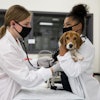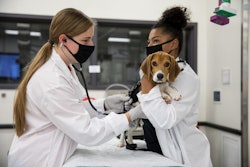 Dr. John C. Nemeth
Dr. John C. Nemeth
Last year’s broad and strident attention to the Obama administration’s effort to consolidate and streamline the nation’s STEM education programs prompts me to report the results of a NIH-SWAM project survey I did on STEM Ph.D. and graduate school candidacy.
Paired with the administration’s “bloody sword of reality,” the efforts out of RTI and Indiana University, nicely summarized in Science (Mervis, 2014), bring some form and substance to the notion that we produce enough STEM graduates. Certainly, Dr. Hal Salzman of Rutgers has long held this position. But, do we really?
In 2012, our PNNL-led team set out as a portion of a larger NIH-SWAM-sponsored project, “Analysis and Modeling of Demographic Cohorts in the Population of Ph.D. Recipients in Science and Engineering,” to examine demographic dynamics of the scientific workforce, and to develop, calibrate and evaluate evidence-based dynamic models of scientific workforce population change. We wanted to know the impact of the increasing proportion of foreign graduate students and postdoctoral scholars, the “right” proportions of female and minority students, and should the rate of participation be increased to attain population proportions that reflect more closely our country’s emerging demographics.
I surveyed over 70 experts from academia, governmental officials, academic research association executives and private sector individuals, including administrators from historically Black colleges and universities and upper-tier and middle-tier academic research institutions. These persons, with whom I have interacted in my five decades of work, and the results, albeit anecdotal, encapsulate a vast store of experience.
These qualitative research findings reinforce the belief that it is high time to rethink how we see the STEM standard bearers of the future. Duplication, comfort, entitlement and little or no results-based evaluation have made for a witches’ stew of STEM education policy and practice. Thus, many are concerned about a key ingredient of the U.S. STEM enterprise — underserved minority participants and women (URM&W). Left alone, will the magnitude of URM&W grow with enough power to perpetuate the viable STEM enterprise we must have?
Remonstrations about the need for more URM&W at top echelons of research and education to match emerging demographics are legion, but what to do about it? I chose to ask experienced professionals on the STEM frontline for guidance.
Using survey questions and giving free rein, I wanted the personal insights of highly experienced, culturally and professionally diverse individuals in research, research administration and/or programmatic implementation at the advanced research levels. Survey questions took the form of “Which policies promote/hinder the development of the scientific Ph.D. workforce in the U.S.?” Unattributed opinions on the state of STEM research were most welcome, freely expressed and candid. Using the information from individuals with such diverse backgrounds, we hope to inform the factors used in and the directions taken in the analysis and modeling of the larger ongoing project.















